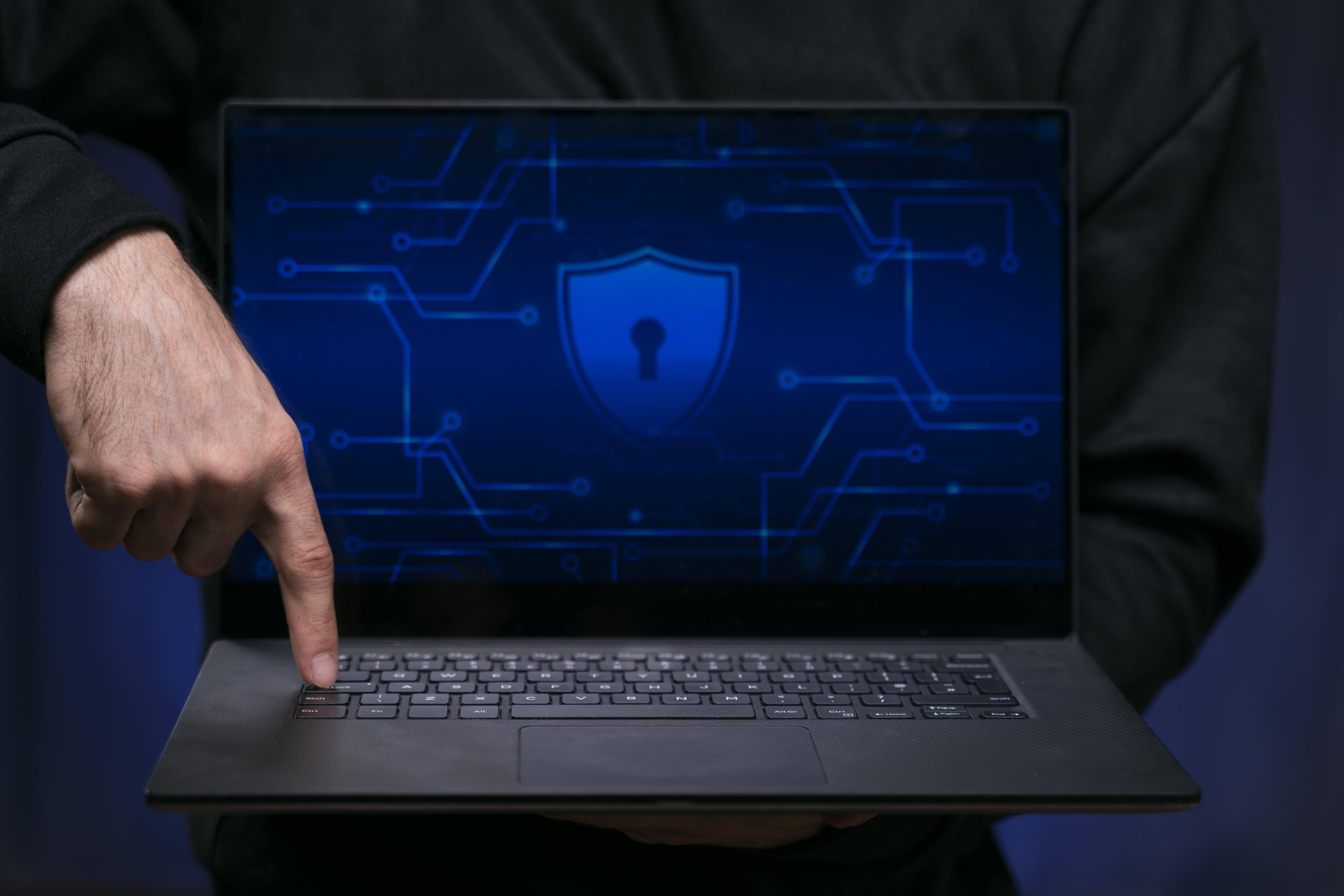Cyber security is one of the most popular terms today. When talking about cyber security, you might automatically associate it with cyber crimes as depicted in movies. In reality, cyber security is a threat that is very close to our daily lives.
What is Cyber Security?
Cyber security is the practice of protecting computers, servers, mobile devices, electronic systems, networks, and data from malicious cyber attacks (cybercrime).
The term cyber security applies in various contexts according to needs, from business to mobile computing, and can be divided into several general categories.
What is the history of cyber security and its threats? Let's find out more!
History of Cyber Security
Cyber security is the result of the long process of computing and internet development. However, people did not know the term cyber security back then. Here is the history of cyber security.
1. 1970s: ARPANET and Creeper
Cyber security began in the 1970s when researcher Bob Thomas created a computer program called Creeper that could move across the ARPANET network. This network was ubiquitous. Ray Tomlinson, the inventor of email, created a program called Reaper that captured and deleted Creeper. Reaper is the first example of antivirus software and a self-replicating program, making it the first computer worm.
2. 1980s: The Birth of Commercial Antivirus
1987 marked the birth of commercial antivirus software, although there is still some debate about this. Andreas Lüning and Kai Figge released their first antivirus product for the Atari ST, which also saw the release of Ultimate Virus Killer in 1987. John McAfee founded McAfee and released VirusScan.
3. 1990s: The World Goes Online
In this decade, the internet became available to the public. With the internet, many people began to put their personal information online. Criminal organizations saw this potential and started stealing data from people and governments through the web. By the mid-1990s, network security threats increased, and firewalls and antivirus programs had to be mass-produced to protect personal information on the internet.
4. 2000s: Professional Cyber Attacks
In the early 2000s, professional cyber attacks became more massive because they were funded by criminal organizations. On the other hand, governments began to take hacking crimes more seriously by imposing much harsher penalties on the perpetrators. The development of the internet during this period was accompanied by rapid developments in cyber attacks, prompting researchers to take cyber security more seriously.
5. 2021: The Next Generation
The cyber security industry is growing rapidly. According to Statista, the global cyber security market is projected to grow to $345.4 billion by 2026. Ransomware is one of the most common threats to any organization's data security and is expected to continue rising. Along with the use of AI, deepfake or synthetic content also becomes a threat to cyber security.
Types of Cyber Security
Cyber security is a collection of several implementations depending on the type of cyber attack and the component being attacked. Here are the types of cyber security:
1. Network Security
Network security is a system that protects data traffic conducted by many users. Network security is effective in protecting company assets and keeping data traffic secure. Some methods to enable network security include installing antivirus, firewalls, two-factor authentication, and data encryption.
2. Cloud Security
Cloud-based services are now widely used to store important data. However, this cloud computing system is still vulnerable to hacker attacks, necessitating cloud security-based cyber security. Examples of applications include installing firewalls, two-factor authentication, and data encryption.
3. Application Security
Many businesses create their own applications to facilitate consumer use. Therefore, for applications, the function of cyber security is to prevent data theft. Application security typically involves verification, both biometric and official identity.
4. Mobile Security
Although mobile devices are personally owned, access to external data makes mobile devices vulnerable to threats from malicious applications such as phishing. Mobile security prevents these attacks and protects the operating system and device.
5. IoT Security
Although using Internet of Things (IoT) devices provides productivity benefits, it also opens up new cyber threats. Threat actors seek vulnerable devices connected to the internet for malicious purposes such as entry points to corporate networks. IoT security protects devices from suspicious network activity.
Cyber Security Threats
Despite efforts to make cyber security increasingly sophisticated, its threats are no less advanced. Each year, new cyber crime vulnerabilities threaten data and operational systems. Cyber security threats pose risks to both individuals and organizations due to their destructive nature to systems.
Here are some cyber security threats:
1. Malware (Malicious Software)
Malware is harmful software designed to infiltrate servers, computer networks, or other infrastructures without user knowledge. This attack is usually distributed via email, applications, websites, or even hidden within a file. Malware can operate undetected and is often accidentally installed by users. Its purpose is to steal personal data and other important information.
2. Phishing
Phishing is the act of stealing personal data and sensitive information by tricking victims into revealing their data themselves. The data in question usually includes credit card numbers or bank account information. Phishing attacks involve perpetrators impersonating legitimate entities and sending links to targets. When the link is accessed by the victim, the attack begins.
3. Man in the Middle (MitM)
Man in the Middle (MitM) attacks are carried out by intercepting communication or data transfer within a network between a user and a web server. The perpetrator impersonates one of the legitimate parties and intercepts information from one party while sending malicious links or unauthorized information to both parties, making them unaware of the attack.
4. Distributed Denial of Service (DDoS)
Distributed Denial of Service (DDoS) attacks aim to make a website and server error or unavailable to users. Attackers create massive data traffic to flood the website, causing it to malfunction. DDoS is often used as a camouflage for subsequent, more severe attacks.
5. Cyber Terrorism
Cyber attacks that continuously occur, causing excessive fear and creating mass panic, can be classified as cyber terrorism. Cyber terrorism typically starts with a similar pattern, spreading fear until society feels confused and panicked.
Ways to Strengthen Cyber Security
After understanding that cyber security threats are potential daily encounters, what steps can we take to strengthen cyber security?
1. Implement Security Updates
Always update operating systems and software with the latest security updates. This step can close network vulnerabilities often exploited by hackers.
2. Use Strong Passwords
Many hackers successfully access networks by guessing passwords and usernames. Avoid creating easily guessed passwords and usernames. Replace them with complex passwords containing characters or numbers. Change passwords periodically to reduce the risk of leakage.
3. Use Multi-factor Authentication (MFA)
Add an extra layer of protection by using multi-factor authentication. Examples of multi-factor authentication include OTP verification codes, authenticator apps, or biometric authentication.
4. Use Biometric Verification
Biometric verification uses unique data such as fingerprints, facial recognition, or retina scans. Since biometric data is difficult to forge, this method is very effective in preventing unauthorized access.
Cyber security is a necessity. Therefore, you must know how to protect yourself from its various threats. One way is by using VIDA.
VIDA has implemented biometrics in its user verification process. VIDA verification uses liveness detection technology to ensure that biometric verification is free from fraudster impersonation. VIDA's latest technology, VIDA Deepfake Shield, is an additional security layer that protects biometric verification from AI-generated photos or videos.
Jun 14, 2024
Cyber Security: Definition, History, Types, and Threats
Cyber security is security applied in the internet-connected world. What are the types and threats of cyber security? Read the following explanation.


Medical Records: Definition, Functions, and Integration with Digital Signatures
Medical records serve not only as a historical record but also as the foundation for decision-making and treatment. So, what exactly are me...
September 18, 2025

How to Become a Beginner Content Creator with Lots of Followers
Being active on social media can open doors to becoming a content creator. Many brands, events, and organizations today are in need of crea...
September 18, 2025

Content Creator: Definition, Income, and Essential Skills
A content creator is a creative profession with massive potential in today’s digital era. Learn about their roles, income opportunities, ho...
September 17, 2025
.png)